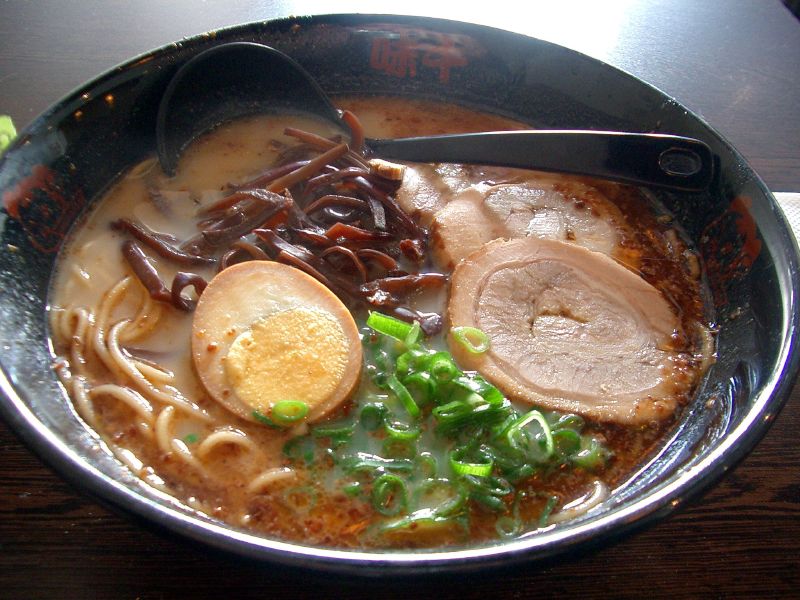Instant noodles: Convenient comfort food or hidden health risk? Experts weigh in
By isabelle // 2025-08-13
Tweet
Share
Copy

- Instant noodles are a global comfort food, beloved for their affordability and convenience, especially among students and busy families.
- Nutrition experts warn that daily consumption can lead to health risks like high blood pressure and metabolic syndrome due to excessive sodium and lack of nutrients.
- A typical packet is high in salt and low in fiber, protein, and essential vitamins, making it an unbalanced meal on its own.
- Healthier upgrades include adding vegetables, protein, and reducing seasoning packet use to improve nutritional value.
- While instant noodles are a practical solution in tough times, moderation and smart tweaks can turn them into a better dietary choice.
The allure of instant noodles
Instant noodles are a global phenomenon, with roots deeply embedded in Asian culinary traditions. Names like Shin Ramyun, Nissin, Buldak, and Jin Ramen are popular not only in countries like South Korea and Japan but also the U.S. and much of the world. These noodles are more than just food; they’re cultural touchstones. For migrants and international students, a single bowl can evoke memories of family kitchens or bustling street markets. Their practicality is undeniable. A single serving costs pennies, requires no culinary skill, and fills hungry stomachs with warm, salty satisfaction. In Australia, the instant noodle market is booming as inflation pushes consumers toward affordable staples. But beneath the convenience lies a nutritional minefield.What’s really in the packet?
A typical instant noodle package contains wheat flour noodles, palm oil, and a flavoring sachet packed with sodium and additives. While the noodles themselves are relatively low in calories (around 380 per serving), the nutritional profile is bleak. Most varieties deliver 600 to 1,500 mg of sodium, nearing the World Health Organization’s daily limit of 2,000 mg. They’re also devoid of fiber, protein, and essential vitamins when consumed as-is. "Objectively speaking, instant ramen noodles may not be the most nutritious option out there," says Cara Harbstreet, a registered dietitian. "They can be very high in sodium and may not contain much in the way of fiber, whole grains, vitamins, or minerals."The health risks of daily consumption
Occasional indulgence won’t harm you, but studies suggest that frequent instant noodle eaters face heightened risks. A South Korean study linked eating noodles more than twice weekly to metabolic syndrome — a cluster of conditions like high blood pressure and insulin resistance that elevate heart disease and diabetes risks. The primary culprit? Sky-high sodium. Excessive salt intake strains the heart and kidneys, contributing to hypertension and stroke. Low fiber intake, another consequence of noodle-heavy diets, is tied to poor gut health and higher diabetes risk.How to make instant noodles healthier
Thankfully, you don't have to give up those comforting bowls of steaming ramen. Nutritionists agree: Instant noodles don’t need to be banned — just upgraded. Here’s how:Add vegetables and protein
Toss in frozen peas, spinach or shredded carrots for fiber and vitamins. A boiled egg, shredded chicken, or tofu boosts protein, keeping you fuller longer.Ditch the flavor packet (or use less)
The seasoning packet delivers most of the sodium. Use half the packet or swap it out entirely for healthier ingredients you can keep on hand at home that pack a flavorful punch, such as miso paste, ginger, or low-sodium broth.Choose better noodles
Opt for air-dried or whole-grain varieties like buckwheat or brown rice noodles when possible. These offer marginally better nutrition than fried, refined-flour options.Be smart about your instant noodle consumption
Instant noodles are a testament to human ingenuity: affordable, fast, and universally loved. But they’re best viewed as a blank canvas, not a complete meal. For those who crave ramen’s comfort, consider homemade versions with fresh noodles, lean proteins, and vegetables. Or, as dietitian Jen Messer suggests, "It's all about moderation." In a pinch, a doctored-up bowl of instant noodles can be part of a balanced diet; just don’t let it become the foundation. In a world where time and money are increasingly tight, instant noodles will remain a staple. But with a few tweaks, they can be more than just empty calories... they can be a stepping stone to healthier, more mindful eating. Sources for this article include: StudyFinds.org EatingWell.com Healthline.com USAToday.comTweet
Share
Copy
Tagged Under:
toxic ingredients junk food healthy eating food supply poison food science truth tips dangerous products grocery ramen frankenfood badfood badhealth health science stop eating poison instant noodles Asian food
You Might Also Like
Navy sailor convicted of selling warship secrets to China for just $12,000
By Cassie B. // Share
Recent News
The breakfast clock: Why timing your morning meal is a secret weapon against high cholesterol
By jacobthomas // Share
The Health Ranger's New Year Revolution: The ultimate guide to health, wealth and freedom
By kevinhughes // Share
"Absolute Healing" on BrightU: Experts explore COVID-19 as an engineered bioweapon
By jacobthomas // Share
Why EMPs pose a catastrophic threat—and places to avoid when they hit
By dominguez // Share
Scientists demonstrate how perfect magnetic symmetry can cancel energy loss
By kevinhughes // Share
Why wasabi is good for more than just sushi
By newseditors // Share











